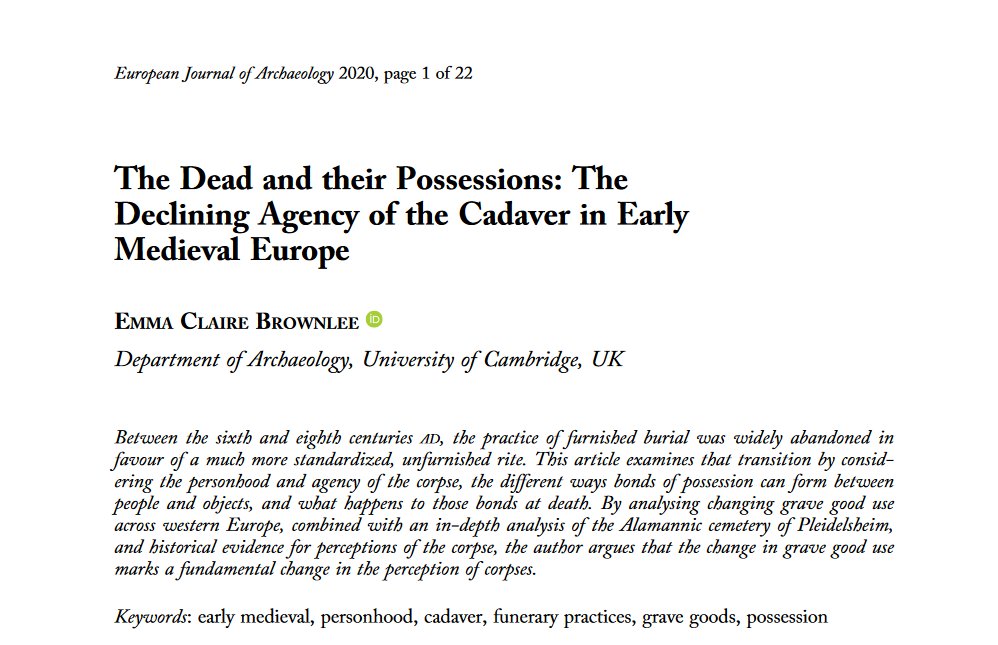
THREAD on why the new @AfterThePlague1 PNAS paper on sixth-century #plague in Britain is so important, and why we need to pay more attention to the plague in discussions of the early medieval world #medievaltwitter pnas.org/content/early/… 1/10
The reach of the First Pandemic (or Justinianic plague) was massive. First recorded in Egypt in 541AD, it spread rapidly to Byzantium, and then further west, reaching Gaul in 543AD, and Ireland in 544AD. We now know that it reached Britain at the same time too 2/10
In addition to the new evidence from Britain, Y. pestis DNA has also been found in several cemeteries in Bavaria, where there are also no historical records of pestilence. This means that we’re probably seriously underestimating just how much of Europe was affected! 3/10
See Harbeck et al 2013 journals.plos.org/plospathogens/… and Feldman et al 2016 academic.oup.com/mbe/article/33… for this Bavarian DNA research 4/10
It's difficult to say how many people died. According to Gregory of Tours, "dead bodies were so numerous that it was not even possible to count them". That might be an exaggeration, but it’s still a lot of people, making the First Pandemic comparable to the Black Death 5/10
We talk a lot about the impact of the 14th century Black Death on living standards, but we rarely talk about the First Pandemic in the same way! Byzantinists are better at discussing it, but it’s been virtually ignored by archaeologists of western Europe until very recently 6/10
However, several people (Marilyn Dunn, Mischa Meier) have pointed out that it most likely inspired a ‘turn towards religion’. When there’s a lot of people around you dying, you’re more likely to be concerned with the fate of your soul! 7/10
I think mass mortality had a long-lasting impact on the relationship between the living and the dead, causing a widescale change in burial practices (this was a key part of my thesis; I’ll be talking about it in Cambridge on 17/06, and hope to turn it into a paper very soon) 8/10
While we shouldn’t rush to attribute all changes to 6th-7th century society to plague, there were probably other economic and social impacts which we have yet to explore. But first, we need to know about the spread of plague. This is where the aDNA evidence is so important! 9/10
The @SocMedArch conference in July on the Long Black Death is very timely, and I’m hoping to see lots of these issues discussed there. Hopefully the aDNA analysis can provide a starting point for brand new discussions about change in early medieval society across Europe 10/10
• • •
Missing some Tweet in this thread? You can try to
force a refresh




